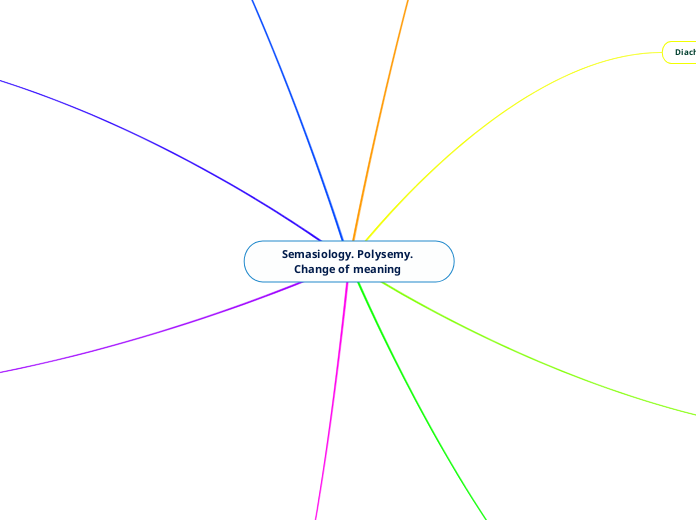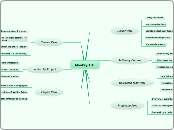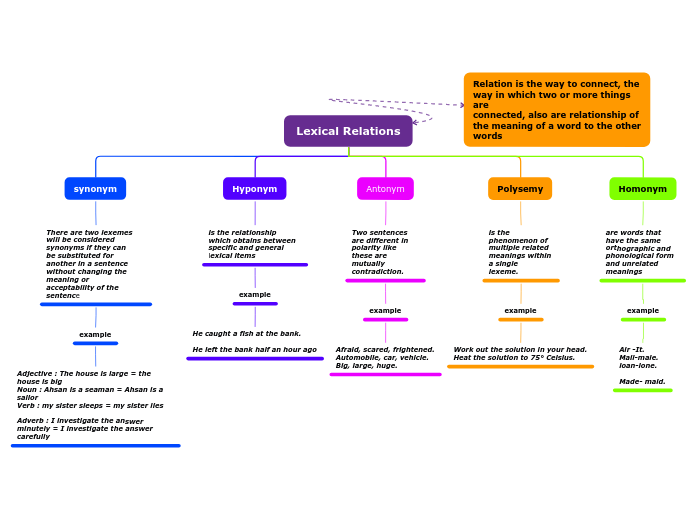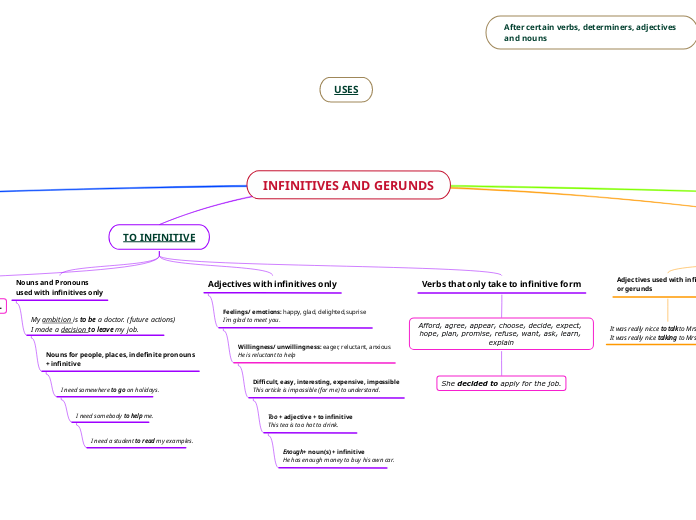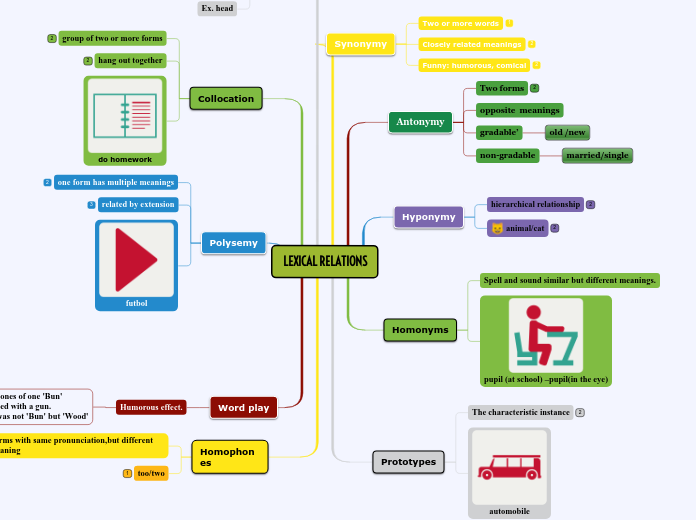Semasiology. Polysemy. Change of meaning
Polysemy
primary / secondary main / derived meanings is connected with two approaches to polysemy
Meaning
figurative when the referent is named and at the same time characterized through its similarity with other objects
tough(таф) meat - direct meaning, tough politician - figurative meaning
direct when it nominates the referent without the help of a context, in isolation
interrelation and interdependence of various meanings in the semantic structure of one and the same word
The problem in polysemy is that of inter relation of different lexico-semantic variants
All lexico-semantic variants of a word taken together form its semantic structure or semantic paradigm
comes from the Greek for "many signs
the association of one word with two or more distinct meanings
Transference of meaning
Metonymy
serve as colorful ways to take the ordinary and dress it up into something poetic or beautiful
The pen is mightier than the sword
to add flavor to writing
consists of the use of the name of one thing for that of something else, with which it is usually associated
Metaphor
based on resemblance an association may be built not only between two physical objects, but also between a concrete object and an abstract concept
observed in idiomatic compounds
head of an army, eye of a needle
the application of a name or a descriptive term to an object to which it is not literally applicable
the transfer of name based on the association of similarity
Extension and narrowing - the result of the semantic change in denotation
Narrowing (specialisation, restriction)
meat => 'food' in general
range of meaning is decreased so that a word can be used appropriately only in fewer contexts than before the change
Widening/Extension
dog =>1) specific powerful breed of dog => all breeds or races of dog
range of meanings of a word increases so that the word can be used in more contexts than were appropriate before the change
Context is the minimal stretch of speech necessary to determine individual meanings of the word
In extra-linguistic contexts
also called extra-linguistic or non-verbal contexts
the meaning of the word is determined not by the linguistic factors but by the actual speech situation in which this word is used
In grammatical contexts
grammatical structure serves to determine various individual meanings of a polysemantic word
In lexical contexts
also called linguistic or verbal contexts
lexically (or phraseologically) bound meanings which implies that such meanings are to be found only in certain lexical contexts
“to take” in isolation has primarily the meaning “lay hold of with the hands, grasp, seize” when combined with the lexical group of words denoting some means of transportation (
groups of lexical items combined with the polysemantic word under consideration
Semantic change in connotation
degradation (pejoration) of word meaning
pretty < OE: prættig 'crafty, sly'
shifts in the sense of a word in the direction towards a more positive value in the minds of the users
elevation (amelioration)
knave 'a rogue' < OE: cnafa ' a youth, a child' > 'servant'
sense of a word takes on a less positive, more negative evaluation in the minds of the users
Synchronic approach to polysemy
tendency in modern linguistics to interpret the concept of the central meaning in terms of the frequency of occurrence of this meaning
marginal meanings are observed only in certain contexts
The central meaning occurs in various and widely different contexts
synchronic semantic analysis of the world table all its meanings represent the semantic structure of it
the coexistence of various meanings of the same word at a certain historical period of the development of the English language
Diachronic approach to polysemy
Some of the old meanings may become obsolete or even disappear
The main source is a change in the semantic structure of the word.
word may retain its previous meaning or meanings and at the same time acquire one or several new ones.
the growth and development or as a change in semantic structure of the word
the primary meaning and the secondary meaning
Homonyms
Sources of Homonymy
identical pronunciation of once different words
seon > sene > see sa > sea
borrowings
Lat vitim > Eng . vice ( evil )
different words became identical in sound and spelling forms
conversion
for creating grammatical homonyms
mother - to mother
Partial homonyms
Homoforms
bound n.jump' bound v . ' past of ' bind
identical in some grammar forms
Homographs
bow [ bou ] -bow [ bau ]
identical in spelling but different in pronunciation and meaning
Homophones
buy - by - bye
identical in pronunciation but different in spelling and meaning
proper ( full , absolute )
like back n. "part of the body" - back adv. "away from the front" - back v. "go back";
identical in spelling and sound form but different in meaning
коса ( волосся ) - коса " ( для покосу трави )
words identical in spelling or sound ( pronunciation ) form but different in meaning
meant to be words which are different from their lexical meanings, though they are identical according to their grammatical meanings
homonyms are words which can be meant to be the same according to their voice construction and pronunciation, yet they are different in their meanings
